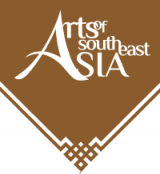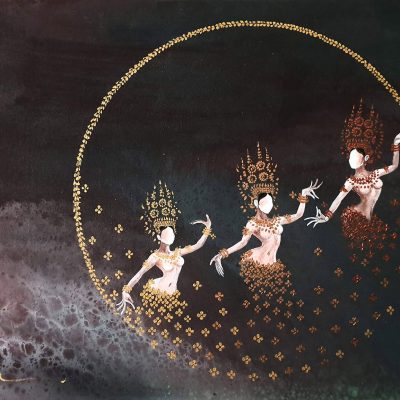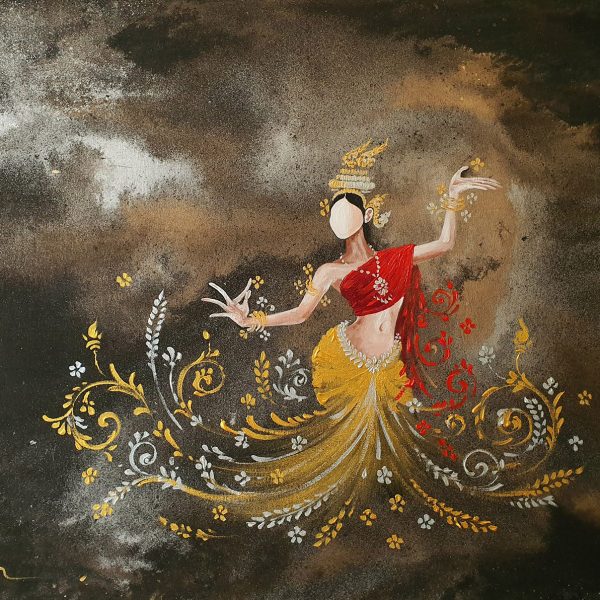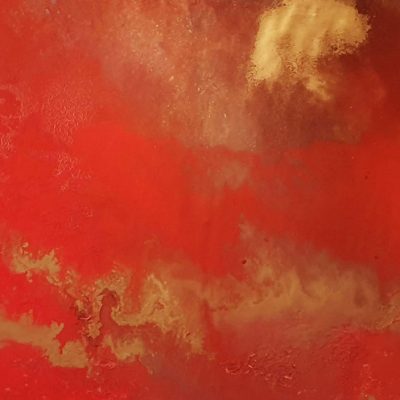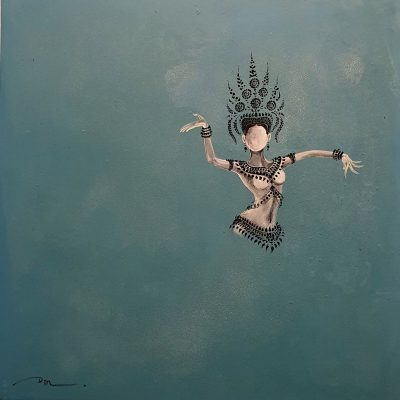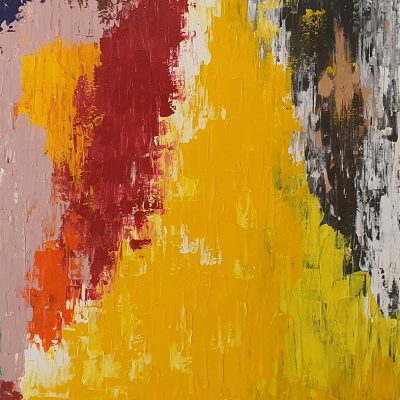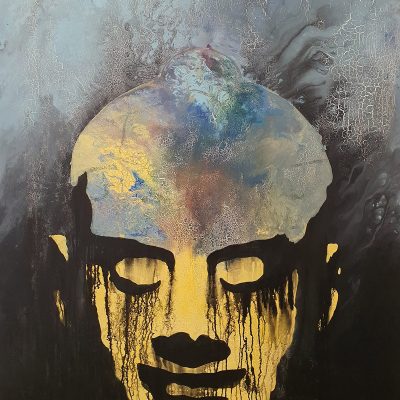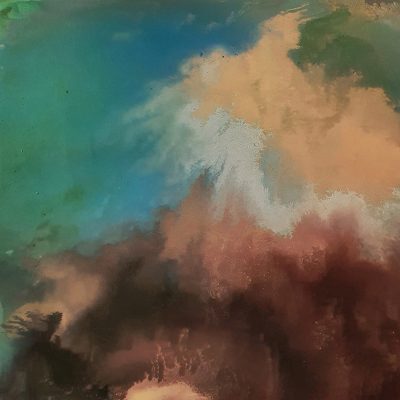Volume 1, Issue 1, July-August 2020.
Din Borin’s
Abstract Painting
Din Borin is one of the most important abstract painters in Cambodia. This young, self-taught artist has no art education, yet in the astonishingly short period of 10 years he has become the most popular and well-known abstract painters in Cambodia and earned himself an international reputation.
On the 5 June 2020, he declared: “I am proud of my work and have comitted my talents to depicting images from Cambodian culture, religion and society, including those relating to homosexuality”.
There are two tendences to note in Dins Oeuvre: one is the inspiration by and abstract expression of cultural and religious heritage (Apsaras and Buddha); the other is his presentation through Western style abstract painting of the complexity and problems of society, nature and humankind. Both of these trends are highly communicative and inspiring, and conceal a profound spirituality, deep, undulating emotions and noble thoughts concerning the problems that are straining society.
The Din Art Gallery by Marissa Carruthers
Teang Borin, commonly known as Din, pauses to lift his eyes from the sketchpad he is hunched over. He looks wistfully across the room to a plain white wall adorned with an array of colourful paintings. “I remember as a child drawing in the dirt with sticks,” he says, recalling his seemingly innate love of art. From recreating the surroundings of his Kampot home as a child to doodling on paper, the now 39 year old knew he was destined to be creative from an early age.
“I spent hours drawing in the soil,” he says, and ”as I grew up, I became interested in anything to do with art, from painting and fashion to interior design”. Following his creative streak, and wanting to create the comfortable, spacious homes he yearned for as a youngster, Borin moved to the capital, Phnom Penh, in 2000 to study architecture at Norton University. ”As I was growing up, I wanted to be an architect,” he explains, ”I wanted to be able to build nice houses for people to live in; somewhere they could feel comfortable and fresh”. It was during his five years of study that Borin became captivated by the aethereal Apsara dancers that enchanted audiences with their graceful gestures and movements. ”This became my inspiration, and still is today,” he says, producing a grainy copy of a photograph of three classical dancers dating back to around the 1940s.
“I love the dancing and movements, and the make up has such an artistic appearance with the white painted faces. The costume design is perfect too. I like the modern Apsara dancers, but I much prefer the traditional ones”. Apsaras are female celestial spirits of the clouds and waters in Hindu and Buddhist culture. Originally they provided sensual pleasure for both gods and men. They figure prominently in sculpture, dance, literature and fine art in many South- and Southeast Asian cultures. Apsaras are widely known in Khmer culture. Apsaras are an important motif in the stone bas-reliefs of the Angkorian temples of Cambodia (8th-13th century AD). The basreliefs of the temples have become an inspiration in Khmer classical dance, which is graceful and uses sinuous gestures to narrate classical myths and religious stories.
With his artistic streak rekindled, Borin started sketching in his spare time, honing his artistic skills and teaching himself new techniques using online tutorials in between his studies, and in his remaining spare time, he would browse the galleries and studios that lined 178 Street, adjacent to the National Museum and Royal University of Fine Arts.
The realism genre and identikit replicas of Angkor Wat and the Cambodian countryside did not suit his abstract style. ”I’m not going to do what everyone else does”, he says. ”I have to do something different”.
Determined to have a signature style, Borin started to play with colours and textures. He used bold brush strokes to play with the hand gestures integral to the traditional dance form and the sinewy shapes of the limbs to make the figures more abstract, all in bold colours using acrylic on canvas.” I didn’t just want to copy a photo of the dancers, I wanted to make them my own,” he says.
After his graduation in 2005, Borin went to work for an architecture firm that specialised in creating private properties. However, he still harboured his childhood dream of one day running his own gallery. In 2014, he took the plunge and, following his heart, gave up his full time job to enjoy the best of both worlds—working as a freelance architect while running his own gallery, which left him more time to focus on developing his art. As he recalls, ”I couldn’t wait any longer. It felt right and I knew that if I didn’t do it then, I’d regret it”.
A frequent visitor to the Feel Good Café on 136 Street, it was during a toilet break that Borin, who cites South African painter Jimmy Law as his inspiration, spotted an empty space upstairs.” It was the perfect place for my gallery”, he says, adding that the owner was more than happy to rent it out. In September 2014, the Din Art Gallery opened its doors as a simple, intimate space to showcase the artist’s range of works.
“It has been great so far”, says Borin, who joins a handful of Khmer artists pushing the contemporary art movement in the country. ”The Cambodian market generally prefers the traditional painting of Angkor Wat or lotus’, but that is changing. The younger generation has access to the internet, and travel, and are influenced by what is happening out there. They come back with more experience and that is helping contemporary and abstract art grow here.”
